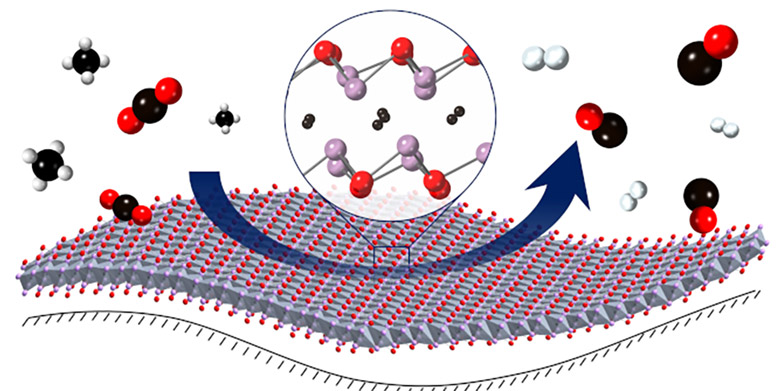(Apex Flex: An All-Perovskite Tandem Technology Suitable for Solar-Powered Vehicles)
2020/10/1 アメリカ合衆国・国立再生可能エネルギー研究所(NREL)

・ NREL が、独自に開発する新しいペロブスカイト材料の「Apex Flex」を用いた全ペロブスカイトタンデム太陽電池の作製に成功。
・ 同太陽電池は、2 種類のペロブスカイト材料層から構成され、Ⅲ-Ⅴ族半導体材料を除いた他の薄膜技術よりも高いエネルギー変換効率のタンデム太陽電池として、ペロブスカイト材料の利点である低コスト、高生産率および高比出力の全てを実現。
・ 従来のペロブスカイトタンデム太陽電池開発における課題である、堅く曲がらないシリコンの使用と化学的な不安定性によるエネルギー変換効率の低下を解決。
・ 従来設計では、光による材料の化学分離がエネルギー変換効率を低下させていたが、今回、従来と異なる分子合金を使用してペロブスカイト層の結晶構造を改造し、熱、光や作動試験を耐久し、安定して高電圧を提供する可変ワイドバンドギャップの新しいペロブスカイト層を作製した。
・ また、従来設計では接続部分に効率性を低下させる微小な分路があったため、標準的な構造と製造手法を維持しながら 2 種類のペロブスカイト材料の間に高密度で従来の約 80%薄い再結合層を作製しすることで分路を回避した。
・ 「Apex Flex」はⅢ-Ⅴ族半導体材料による太陽電池以において可変バンドギャップを取り入れた唯一の材料で、最高の電圧効率(37%)および薄膜では最高記録のエネルギー変換効率(24.5%)を達成。高速ロール・ツー・ロール製造により、競合する技術の中で最高の生産率を見込む。コストは性能ベースで競合するⅢ-Ⅴ族材料の 1/200。
・ 「Apex Flex」について特許 2 件を出願し、商用化に向けて Swift Solar に技術ラインセンスを供与。同社では、大規模なグリッド展開に加え、トラック・電気自動車産業での軽量で効率的な太陽電池アプリケーションの好機を見いだしている。
・ 「Apex Flex」により、ウェアラブルかつフレキシブルな太陽光パネルが本格的に実現可能に。現行のフレキシブル PV 技術よりも低いコストで、その 10 倍発電し、より高い電圧効率が期待できる。
・ 家庭用・事業用の PV システムで必要とされる 25~30 年の耐用年数は未達成だが、安定性の向上により自動車アプリケーションの市場への導入が進んでおり、今後のイノベーションでさらなる進展を見込む。
URL: https://www.nrel.gov/news/features/2020/apex-flex-all-perovskite-tandem-technology-solarpowered-vehicles.html
<NEDO海外技術情報より>
(関連情報)
Joule 掲載論文(アブストラクトのみ:全文は有料)
Enabling Flexible All-Perovskite Tandem Solar Cells
URL: https://www.sciencedirect.com/science/article/pii/S2542435119302521
Abstract
Multijunction all-perovskite solar cells offer a route toward efficiencies of III-V materials at low cost by combining the advantages of low thermalization loss in multijunction architectures with the beneficial properties of perovskites—namely, low processing cost, high-throughput fabrication, and compatibility with flexible substrates. However, there are two main challenges for enabling high-efficiency tandems: (1) design of a recombination layer to efficiently combine two perovskite subcells while also preventing bottom cell damage during top cell processing and (2) achieving high open-circuit voltage of the wide-gap subcell. Herein, we overcome both of these challenges. First, we demonstrate a nucleation layer consisting of an ultra-thin polymer with nucleophilic hydroxyl and amine functional groups for nucleating a conformal, low-conductivity aluminum zinc oxide layer by atomic layer deposition (ALD). This method enables ALD-grown recombination layers that reduce shunting as well as solvent degradation from solution processing on top of existing perovskite active layers. Next, we demonstrate a band-gap tuning strategy based on A-site cations of mismatched size (dimethylammonium and cesium) to enable a 1.7 eV perovskite with high, stable voltages. By combining these advances, we fabricate two-terminal all-perovskite tandem solar cells with 23.1% power conversion efficiency on rigid substrates and 21.3% on flexible plastic substrates.


